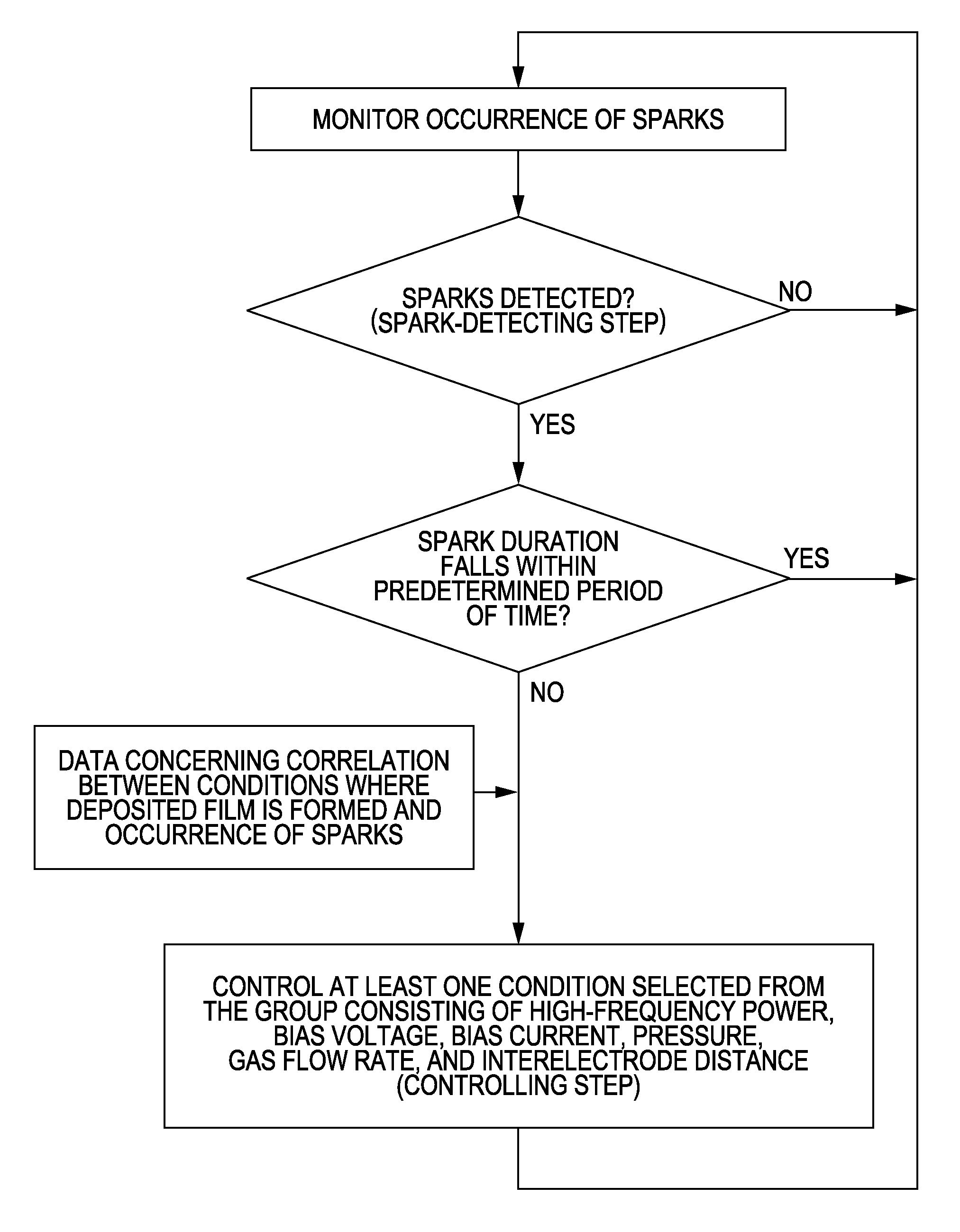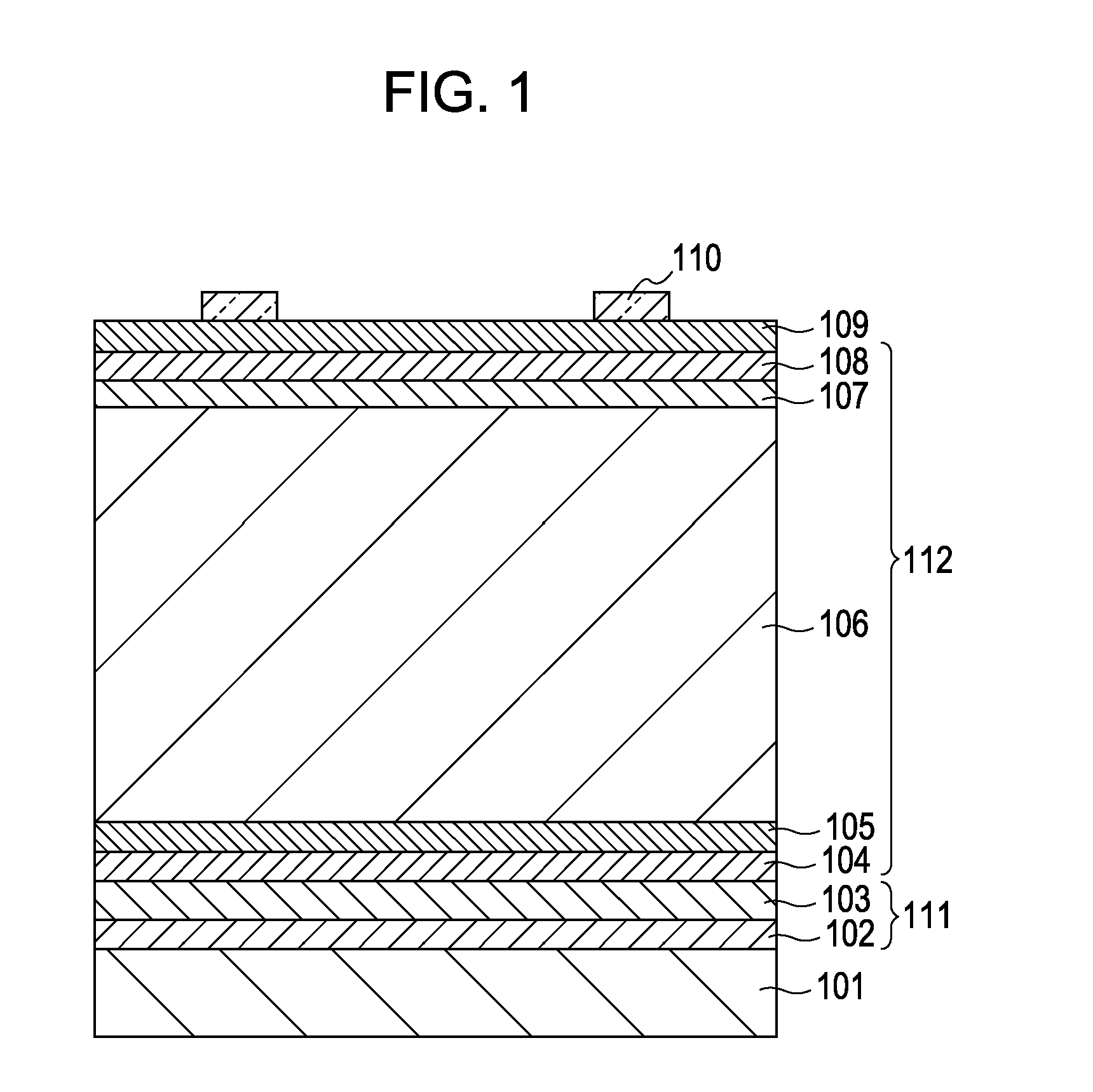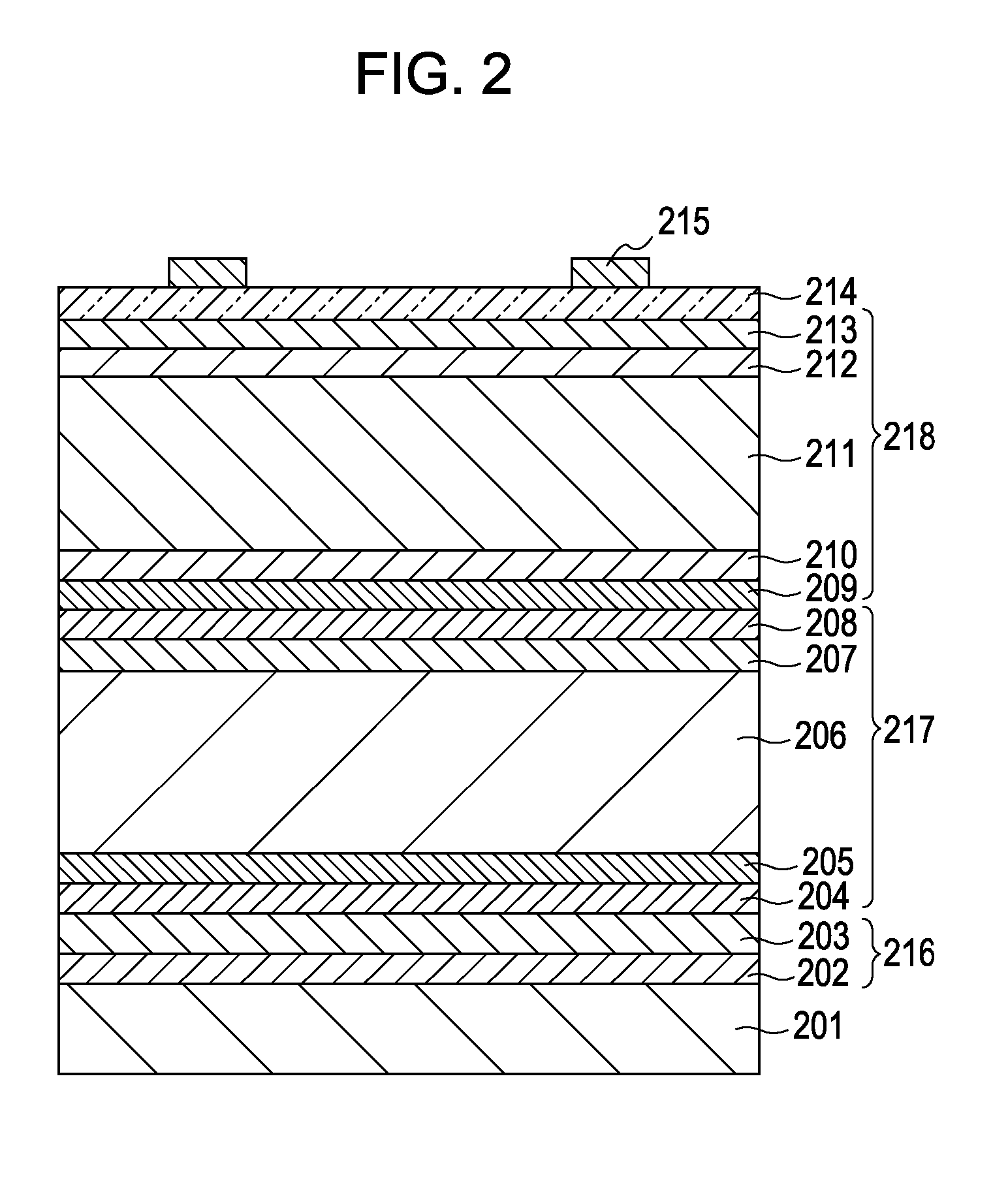Method for forming semiconductor device and method for forming photovoltaic device
- Summary
- Abstract
- Description
- Claims
- Application Information
AI Technical Summary
Benefits of technology
Problems solved by technology
Method used
Image
Examples
example 1
[0252] A strip-like stainless (SUS430BA) substrate (width: 40 cm; length: 200 m; thickness: 0.125 mm) is sufficiently degreased and cleaned and is inserted into a continuous sputtering apparatus (not shown). A silver film is deposited to a thickness of 100 nm on the substrate by sputtering using a silver electrode as a target. A ZnO film is then deposited to a thickness of 1.2 μm on the silver film by sputtering using a ZnO target. Thus, a strip-like conductive substrate is prepared.
[0253] Next, n-type, i-type, and p-type semiconductor layers are sequentially deposited on the substrate by the procedure described above under the conditions shown in Table 1. An ITO transparent conductive film is deposited to a thickness of 80 nm on each n-i-p photoelectric conversion unit as a front electrode by sputtering using a sputtering apparatus (not shown). An interdigital silver electrode for outputting current is then deposited on the transparent conductive film by vapor deposition. Thus, sa...
example 2
[0282] Samples are produced under the same conditions as in Example 1 except that the deposition pressure and the gas flow rate at which the i-type layer, the p / i buffer layer, and the n / i buffer layer are deposited are changed on the basis of the results of the preliminary experiment so that the number of sparks with durations of 100 ms or more is substantially 0 sparks and the number of sparks with durations of 50 μs to 20 ms is 5 or less sparks per minute. These samples are evaluated as in Example 1.
[0283] The results are shown in Table 2 together with the results of Example 1.
example 3
[0284] Samples are produced under the same conditions as in Example 1 except that the deposition pressure and the gas flow rate at which the i-type layer, the p / i buffer layer, and the n / i buffer layer are deposited are changed on the basis of the results of the preliminary experiment so that the number of sparks with durations of 100 ms or more is substantially 0 sparks and the number of sparks with durations of 20 to 100 ms is 3 or less sparks per minute. These samples are evaluated as in Example 1.
[0285] The results are shown in Table 2 together with the results of Example 1.
PUM
| Property | Measurement | Unit |
|---|---|---|
| Length | aaaaa | aaaaa |
| Time | aaaaa | aaaaa |
| Thickness | aaaaa | aaaaa |
Abstract
Description
Claims
Application Information
 Login to View More
Login to View More - R&D
- Intellectual Property
- Life Sciences
- Materials
- Tech Scout
- Unparalleled Data Quality
- Higher Quality Content
- 60% Fewer Hallucinations
Browse by: Latest US Patents, China's latest patents, Technical Efficacy Thesaurus, Application Domain, Technology Topic, Popular Technical Reports.
© 2025 PatSnap. All rights reserved.Legal|Privacy policy|Modern Slavery Act Transparency Statement|Sitemap|About US| Contact US: help@patsnap.com



